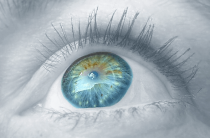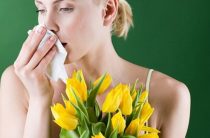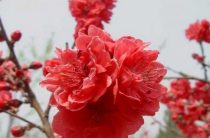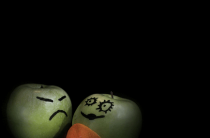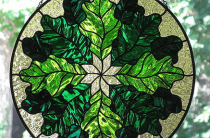If you feel that after getting a certain substance that is harmless in its essence (bee honey, plant pollen, cat hair), you feel itchy skin, inflammation, sneezing, your eyes water and your temperature rises, then these are sure signs of an allergy. Allergic reactions are an autoimmune disorder, or, more simply, a consequence of the malfunctioning of the immune system, which, for certain reasons known only to it, recognizes its enemy in harmless substances. Allergies in the modern world are spreading at a terrifying pace, especially among residents of large cities. Rural residents, in this regard, were more fortunate, which is explained by better environmental conditions, a large number of natural products, etc.
Allergy triggers
Allergy is a disease that manifests itself as a result of exposure to numerous factors that negatively affect the functioning of the immune system. As a result, failures occur, which are expressed in increased sensitivity to the daily components of the environment. These factors are divided into external (related to the environment) and internal (associated with disruption of the body).
External factors:
- Poor environmental conditions;
- Increased radiation background;
- The use of a large number of cosmetics and household chemicals;
- Lack of normal physical activity;
- Lack of breastfeeding, or its complete absence;
- Poor nutrition, in which there is a lack of proteins, vitamins, minerals and beneficial omega-3 fatty acids;
Internal factors:
- Hormonal disbalance;
- The presence of allergic reactions in the father, mother or close relatives;
- liver problems;
- intestinal dysbacteriosis;
- Infestations of helminthine worms;
- Kidney disorders
Allergy to bloom
These factors can serve as a "trigger" for the development of an allergy to flowering in individuals whose body has a predisposition to this. Thus, not all people living in regions with high levels of industrial waste pollution will not necessarily be allergic to pollen. When these factors are taken into account, an allergic reaction can only be predicted, but not predicted with 100% probability. For what reason, some people become allergic, while others bypass this fate - is unknown.
Flower allergy is an autoimmune disease in which antibodies are produced to components contained in plant pollen. Antibodies are a natural defense mechanism that is needed to trigger immune system responses in response to an invading threat. In the case of an allergy, this threat is not relevant, but due to the fact that antibodies are produced in the body, it becomes real and a corresponding reaction occurs, in the form of symptoms of an allergy to pollen.
Flower allergy symptoms
Symptoms of pollen allergy have an obvious connection with the onset of flowering of the allergen plant. As soon as it appears in the air, even in minimal concentrations, the patient begins to notice a deterioration in well-being, which at first cannot be distinguished from cold syndromes: the patient begins to feel sick, the temperature rises, an attack of headache is noted, weakness may appear, or vice versa - irritability.
Actually, the characteristic symptoms of pollen allergy are due to the allergen getting on the mucous membranes of the eyes, nasopharynx, as well as contact with the trachea, bronchi and lungs. In a patient with allergies, the eyes begin to water, tingling, inflammation of the mucous membrane and redness of the vessels of the eye, as well as adjacent skin, appear. Contact with the nasopharynx, as well as further penetration into the organs of the respiratory system, causes: allergic cough (which is characterized by dryness and pain), sneezing, nasal congestion, constant runny nose.
Often, pollen ingestion can provoke undesirable disorders such as asthma attacks. At the same time, a patient with allergies, after contact with pollen, first begins to experience bouts of dry cough, and then suffocation, which is accompanied by pressing sensations in the chest area. Modern medicine does not have the means to get rid of allergies completely. The main method of therapy is medications that help get rid of allergy symptoms or alleviate them.
Plants that cause pollen allergy
Allergy to flowering plants has several bursts of incidence:
- The first burst occurs in the spring and it begins with the flowering of snowdrops and lilies of the valley. Then, from the beginning of April to the end of May, trees bloom, which are pollinated by the wind: alder, birch, oak, hornbeam, beech, poplar, aspen, elm.
- The second surge is associated with the flowering of herbs that grow in meadows, for example, dandelion, couch grass, timothy.
- The third surge occurs in autumn, when weeds bloom: wormwood, quinoa, ragweed, etc.
It must be remembered that plants begin to withdraw in different regions in different ways and the difference can reach up to two weeks. For this reason, people with a predisposition to pollen allergies need to inquire about the timing of flowering in their area of residence.
Diagnosis of an allergy to flowering
To get rid of an allergy to pollen, you need to know which plant is the provocateur of allergic reactions. It is not always possible for a patient to say exactly which pollen of which particular plant provokes this ailment. There are several ways to diagnose pollen allergy:
- skin tests;
- provocative tests;
- Blood test for antibodies
Skin tests are diagnostic measures that are based on a skin reaction, or lack thereof, upon contact with a suspected allergen. They are carried out by applying an allergen solution to the skin in various ways. This can be done with a special bandage, superficial injections or a scalpel. For pollen allergy, skin testing is a highly accurate diagnostic tool. Alas, their implementation is not always safe for the patient. They are not used during pregnancy, lactation, during acute manifestations of allergies, as well as in young children.
Provocative tests are a diagnostic method that is similar to skin tests in terms of the mechanism of action. The difference lies in the fact that provocative tests are applied to the mucous membranes, which are more sensitive to allergens. However, these tests are more dangerous in terms of the development of complications. They have the same contraindications as skin tests.
A blood test for antibodies is a diagnostic measure that aims to identify a potential allergen by the reaction of blood cells. In particular, with this method, we are interested in such immune cells as eosinophils. With an allergic reaction caused by contact with an allergen, they begin to produce antibodies, the increase in which is diagnosed during a blood test.
How is the treatment carried out?
In the modern world, there are enough medical products that, if used correctly, allow you to get rid of the manifestations of allergies as safely as possible. The occurrence of an allergic reaction to flowering is characterized by respiratory and conjunctival manifestations, as a result of which a rather impressive arsenal of topical agents is used: eye drops, nasal sprays, etc. Manifestations of allergic bronchial asthma, which, alas, are not uncommon in case of allergy to flowering, are eliminated according to the general scheme for asthmatic manifestations.
Claritin (Loratidine) is an effective remedy in the treatment of pollen allergy. It showed high effectiveness in relieving the symptoms of allergic rhinitis and conjunctivitis. The action is based on the replacement of histamine receptors, as a result of which the allergic reaction is suppressed. Side effects are rare and are mainly characterized by: weakness, decreased performance, drying of the mucous membranes of the oral cavity, the possible development of symptoms of gastritis.
Loratidine shows the ability to penetrate into breast milk, therefore, is contraindicated in breastfeeding.
Clemastine is a histamine receptor blocker with an inhibitory effect on the central nervous system. Reception of clemastine is accompanied by lethargy, lethargy, drowsiness. However, it has a powerful anti-allergic and anti-edematous effect. It is an effective drug for pollen allergies.
Diazolin , one of the first antiallergic drugs, shows high efficiency in the treatment of pollen allergy. The inhibitory effect on the central nervous system is less pronounced, but the incidence of gastrointestinal disorders is higher than with the use of analogues.
Vasoconstrictor drops for allergies
Histamine, which provokes allergic reactions, also causes vasodilation and increases their permeability. In pollen allergies, these reactions affect the blood vessels that are located in the mucous membranes of the eyes and nose, causing symptoms such as nasal congestion and red eyes. Vasoconstrictor drugs can get rid of these unwanted manifestations.
Vasoconstrictor drops for the nose (naphazoline, tramazolin, oxymetazoline) and for the eyes (visin, vial) have a slightly different composition. In no case should they be replaced, as this may have a negative impact on the work of these organs. Vasoconstrictor drops are used to relieve acute manifestations of allergies, no more than 5 days in a row, so as not to cause addiction provoked by drugs.
Prevention for allergies to flowering
The best way to get rid of a bloom allergy is to avoid contact with the allergen. In this case, this can be done in several ways:
- Find out when the flowering of a harmful plant begins and leave the limits of its growth for this time;
- As often as possible, carry out wet cleaning of the room in which you are.
- Use air conditioners, as well as special purifiers, to clean the home air of plant pollen present.
- To prevent contact with the allergen, use a respirator and sunglasses when outdoors.
- Find out where and under what conditions your allergen plant grows and try by all means to avoid the places of its probable stay.
- Remember that the best time to be outside when the allergen is blooming is cool evening, rainy weather, morning and afternoon, when it is dry and windy - the most dangerous.
This article is for informational purposes only. If you or your loved ones show symptoms of an allergy, or any other suspicious violations, you should immediately contact a specialist. It is an allergist who will help you get rid of an allergy to flowering in the most effective and safe way.

